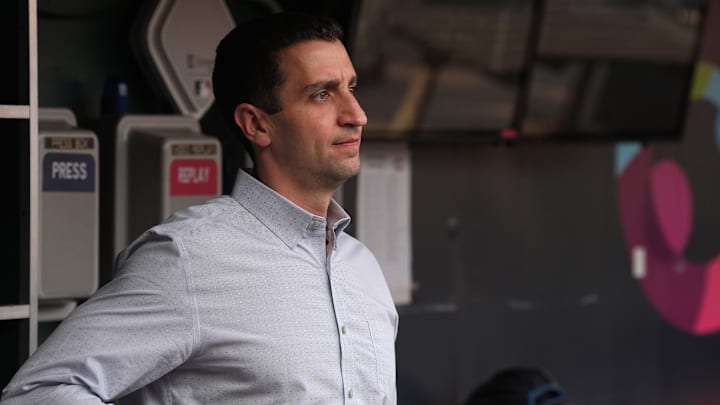The New York Mets are collapsing. With the regular season dwindling to its final, precious few games, what once looked like a promising campaign is now teetering on the brink of disaster. The team’s playoff chances, once a near-certainty, are slipping through their fingers with each frustrating loss. While the arrival of Juan Soto electrified the offense for much of the year, the glaring roster holes that were patched over with maybes and hopes in the offseason have been ripped wide open down the stretch.
This freefall isn't just a late-season slump; it’s the consequence of a flawed roster construction. It’s the bill coming due for an offseason strategy that, aside from the blockbuster Soto signing, felt more suited for a small-market contender than a team with New York-sized aspirations. As the Mets stumble towards the finish line, this painful collapse must serve as a blaring wake-up call for President of Baseball Operations David Stearns. The time for experiments is over.
The Mets’ small-market formula is failing its New York test
The primary culprit for this late-season nosedive has been the starting rotation. The rotation was built on a series of gambles—a collection of bounce-back projects and speculative arms that lacked the consistency required for a 162-game marathon. While this approach produced adequate results in the first half, the regression has been swift and brutal. The bullpen has been overtaxed and exposed, forced into high-leverage situations in the middle innings far too often, and the cracks have shattered under the pressure of a playoff race.
This same "hope for the best" strategy bled into the lineup. The bottom of the order has been an offensive wasteland, unable to supplement the production from Soto, Pete Alonso, and Francisco Lindor. Players like Cedric Mullins, Tyrone Taylor, and Jose Siri were acquired to provide defensive stability, but their offensive shortcomings have been glaring. A team cannot consistently win in September when multiple spots in the lineup feature hitters with a strikeout rate (K%) approaching 30% and a wRC+ (Weighted Runs Created Plus) well below the league average of 100. They have become rally-killers when the stakes are highest.
This is the Milwaukee model, and it isn't working in Queens. In a smaller market, Stearns masterfully built contenders by prioritizing pitching depth and defense while taking calculated risks on offense. But the goal in New York isn't just to be competitive; it's to be dominant. You cannot surround a core of superstars with high-variance arms and defense-only position players and expect to win a championship.
Whether the Mets manage to back their way into a Wild Card spot or not, the lesson of this September collapse must be learned. The potential of this team’s core is undeniable, but it was not properly supported. This offseason, Stearns has to prove he understands that. It means leaving the small-market gambles behind and investing in certainty: durable, reliable starting pitchers and complete baseball players who can contribute on both sides of the ball. The foundation is here, but the 2025 season has proven it's not nearly strong enough.
